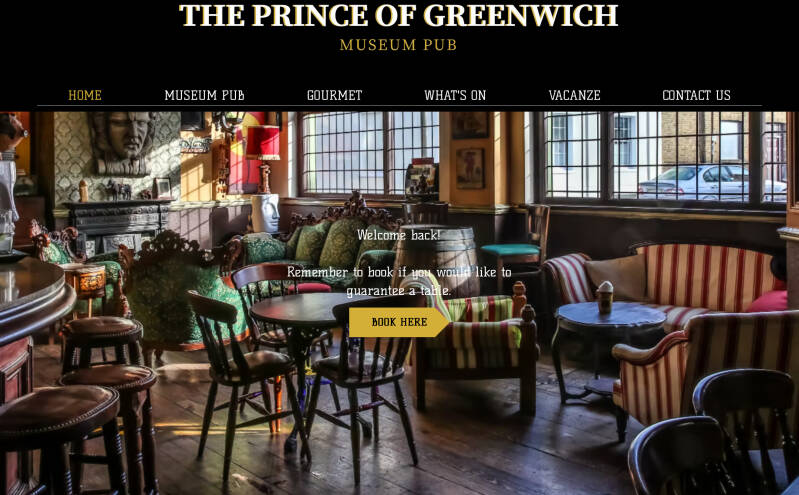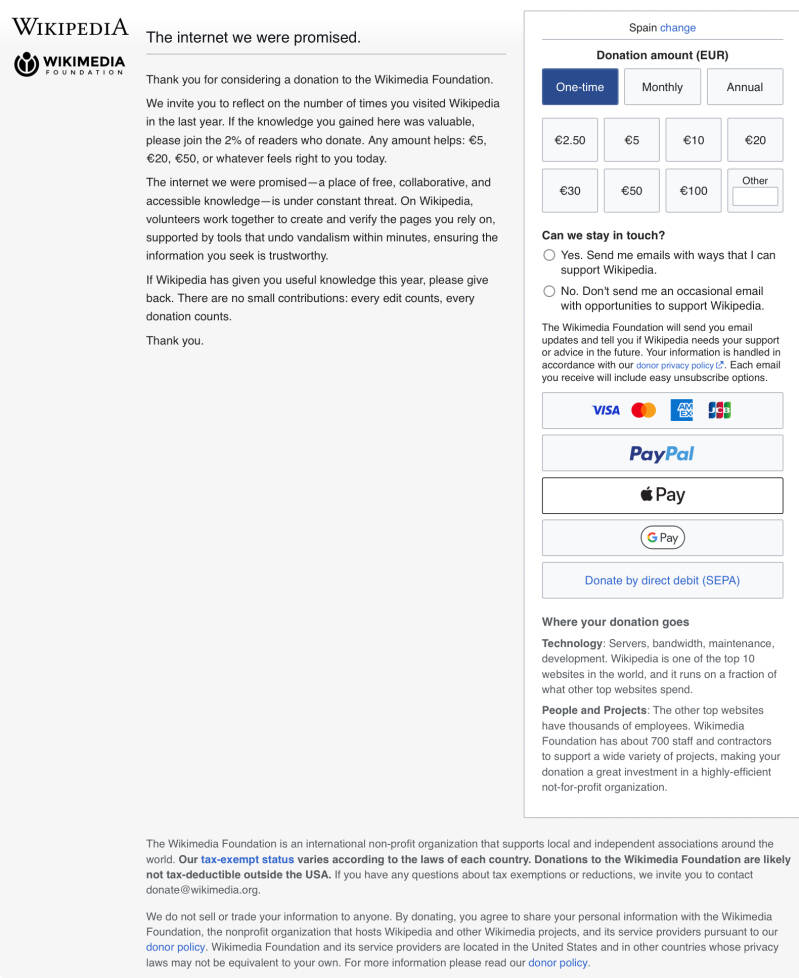
WEST GROVE (BLACKHEATH) to GREENWICH TOWN CENTRE
2 alternatives routes:
Along CROOMS HILL, and towards the QUEEN’S HOUSE
Along ROYAL HILL, and towards DEPTFORD, town/river
Conservation Area



Route 1: Along Point Hill (road) and Royal Hill (road)
Westgrove Lane
Point Hill (road)
POINT HILL
A 150 ft high plateau, fringed by plane trees, on an escarpment projecting on the western edge of Blackheath, providing fantastic views Westwards, has underneath it the B Cvern , probably an old chalk mine, rediscovered in 1780 and opened as a tourist attraction, until c.1854, when it ceased to be open on a regular basis, and finally closed in 1946. There is no visible former entrance or shafts…
Maidenstone Hill & College Place East and west
Part of the MORDEN COLLEGE development
M C ESTATE OFFICE
Royal Hill
Pleasant 18th and 19th c houses
ROYAL HILL LITERARY INSTITUTION & LECTURE HALL
Former local MP JOHN TOWNSEND, with his wife and son acted here in 1866, arousing great expectation. JOHN had been a boy actor, but then took over his father auctioneers business. Afterwards, became Poor Law Guardian and campaigned for the raise of dockers pay, and became an MP. While in Parliament he performed at MARYLEBONE THEATRE and at ASTLEY’S ROYAL AMPHITHEATRE… Afterwards things went wrong and decided to emigrate to Canada, after the farewell performance here.
Shops and eateries

Gloucester Circus


A circus or a crescent?. Designed by the local arch. MICHAEL SEARLE, b. 1791-1809. It has retained some of the original houses on the E and S sides.. T the E, in yellow brick, Regency buildings. Typical canopy.
Former TOWN HALL








1938-9. Arch’s. CLIFFORD, CULPIN & BOWERS. Continental “modern movement”, inspired in HILVERSUM Town Hall. DUDOK)’s style. A carefully balanced composition of verticals and horizontals.
An stylish165 ft/ 50 m tower (higher than the OBSERVATORY’S courtyard) symbolic and stylish as ST.AFEGE’s
A public building, housing and representing a socialist administration, typical of the 1930s
PUBLIC LIBRARY (“The gift of Andrew Carnegie”)
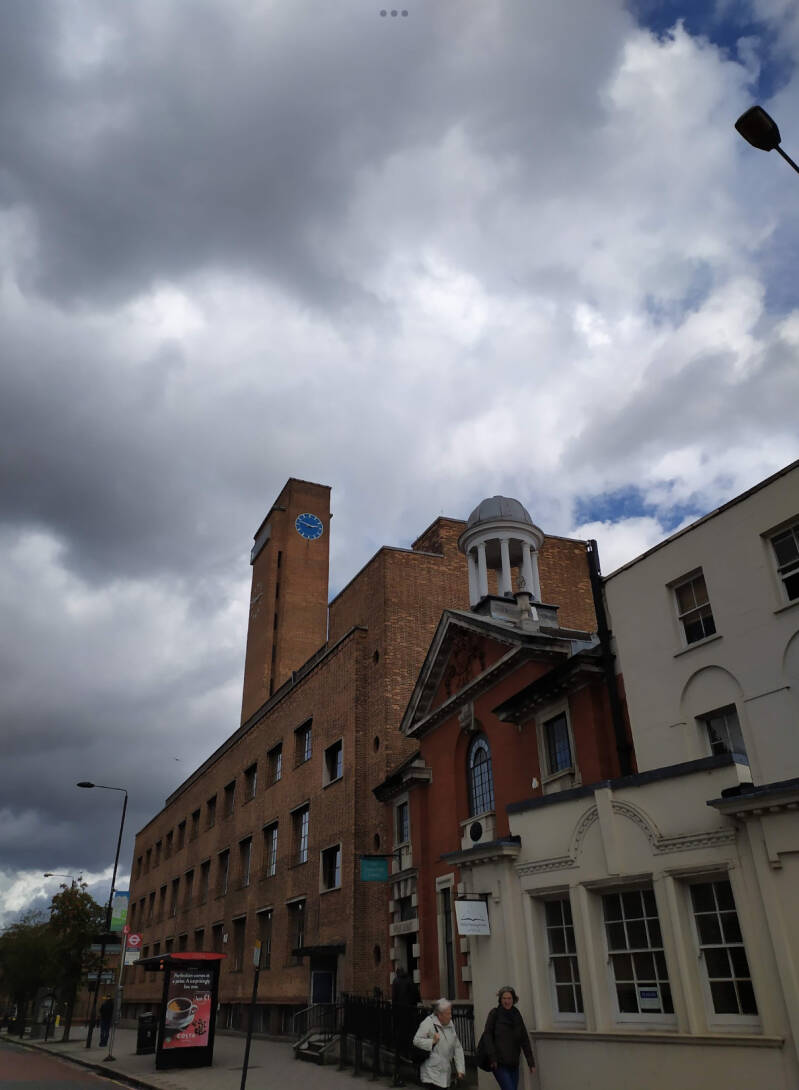
Scot, American (born 1880 DUNFERLINE). businessman and philanthropist. He helped to set up 2.509 University and Public libraries. 66o in the UK, 1.689 in the US.
In order to give the means to the ambitious and industrious, to help themselves improve themselves, working their way to success (meritocracy). He was thinking of immigrants, Black-Americans (“COLORED CARNEGIE LIBRARIES”).
By means of large grants to build significant buildings, where prominent doorways, monumental staircases , huge lampposts or lantern were symbols (elevation by learning and enlightenment).
Local authorities had to apply, demonstrating their needs, providing the site, drawing public funds to run the library, providing annually a 10% of the cost of construction to support its operation, provide FREE SERVICE
Greenwich South St.
ALFRED SALTER’s birthplace. Firebrand, republican, socialist, agnostic, teetotal, pacifist. IDEALIST
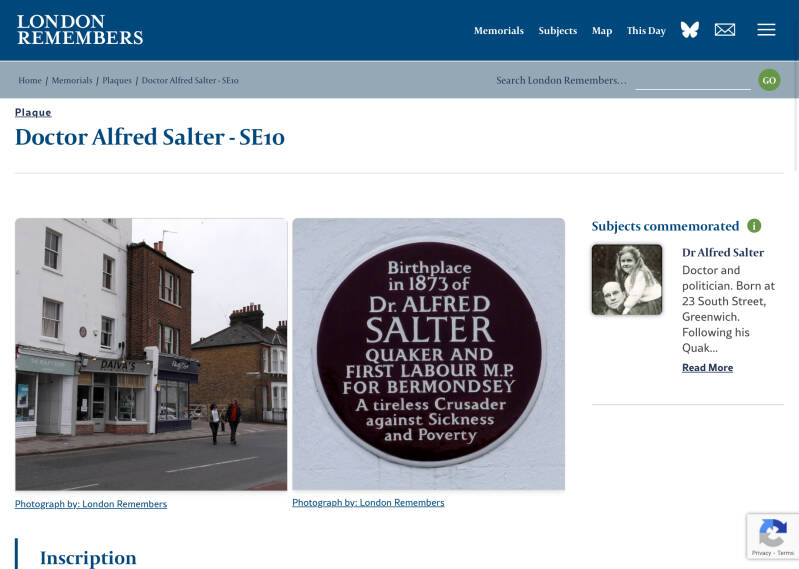
Doctor and politician. Born in 1875 at 23 South Street, Greenwich. Following his Quaker principles, he gave up a potentially brilliant medical career in order to tend the sick and poor and needy in Bermondsey, his surgery being on the site of what is now Bermondsey Station.
He studied at GUY’S. Gold medal, scholarship, public health and pathology. He became house physician at Guy's, and resident obstetrician, then bacteriologist at the LISTER INSTITUTE of PREVENTIVE MEDICINE (CHELSEA).
He and his wife Ada moved into the slums in order to win the trust of the people, and this may have contributed to the early death of their daughter Joyce, from a particularly virulent strain of scarlet fever.
Based in the METHODIST SETTLEMENT, he set up health insurance and education initiatives for dockers and other casual workers.
1900. Medical practice innBermondsey (Free consultation, alleviation of poverty) 1903. Elected to Bermondsey Borough C. 1906. Elected to LCC.
He experienced election defeats until he was the first LABOUR MP for Bermondsey West, 1922, and in successive elections.
ADA was elected councillor and FIRST FEMALE MAYOR of Bermondsey.
Believer in appeasement (WW1 experience ,Great Depression) and, during WW2, opposed to the bombings of German cities, on moral basis
Died in Guy's Hospital.
Remember the ROTHERHITHE RIVERSIDE statue group, and other MEMORIALS dedicated to the SALTER couple, ADA and ALFRED
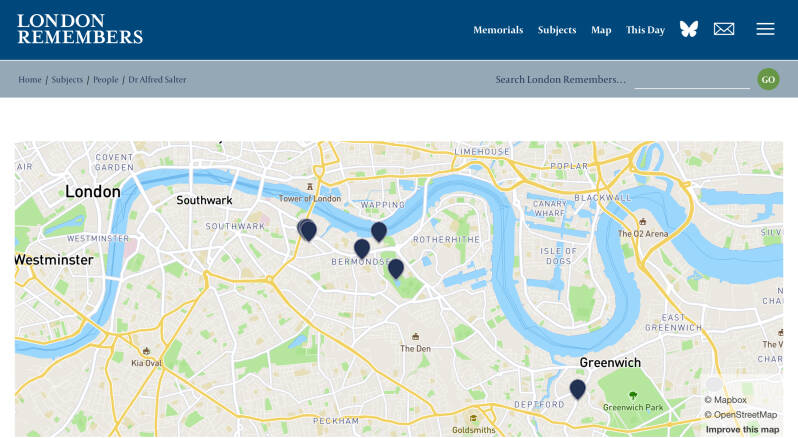
QUEEN ELIZABETH COLLEGE (Almshouses)
Queen Elizabeth College was founded by WILLIAMi LAMBARDE, historian, n 1576 for the poor elderly people of Greenwich. The present-day buildings were built in 1818 and after much modernisation now provide 40 self-contained one-bedroom cottages.
Also on the estate is (wrong spelling) House, built in 1967, which consists of 28 self-contained flats, eight of which have a second bedroom.
Railway (with DLR interchange) STATION
Built in 1840, by GEORGE SMITH. Reb.1878.
Originally it had a high-level platform, but the track was lowered when the line was put in a CUT-AND-COVER TUNNEL to run East, 1878.
London’s Railways
FIRST STEAM POWERED SUBURBAN RWY in the London area: 14th December 1836. LONDON SPA ROAD St - DEPTFORD - GREENWICH. “Church bells rang and people cheered along the route, as the LM and 300 guests were carried along the roust a starling 10 miles per hour. At DEOTFORD, in true coaching style, drinks were ordered…”.
Long viaducts were constructed (900 arches!!!: one company even hope, vainly, to rent them out as dwelling homes!!!). Nowadays the VIADUCT from LONDON BRIDGE STATION may be considered the world’s larger solid structure.
Hillside sections had to be excavated.
Tens of thousands were employed to construct the line. Over 100.000 were evicted from their homes (there was violent opposition).
The TERMINI would become the STEAM PALACES of the competing companies, providing an impressive welcome
History of British Railways

The WORLD’S FIRST public railway was the SURREY IRON RWY, from WANDSWORTH to CROYDON. That was in 1803, and wagons were drawn by horses
But by September 1825, the Oystermouth Railway in Swansea had already been running for 18 years, in what the Guinness Book of Records acknowledges as the world's first fee-paying passenger railway line.
Originally built under an act of Parliament, the Oystermouth Railway or Tramroad Act 1804, to move limestone from the quarries of Mumbles to Swansea and to the markets beyond, it carried the world's first fare-paying railway passengers under an agreement effective from 25 March 1807. It later moved from horse power to steam locomotion, and was finally converted to electric power, using the largest tram cars ever built for service in Britain, before closing in January 1960, in favour of motor buses.
This week it will be 200 years since what has often been described as the birth of the modern railway - when the Stockton to Darlington public line in north-east England became the first world's public railway to use steam locomotives for passengers and freight. The initial public passenger train ran on September 27, 1825, pulled by Stephenson's Locomotion No. 1
Former THE PRINCE OF ORANGE P.H. now ST.CRISTOPHER’s INN and

DAVY’S WINE VAULTS


”Our story begins in 1870 when Francis Edwin Davy opened the Rising Sun just off Strand. Known as a “wine house”, it opened at a time when the area around Strand and Charing Cross was changing fast with pubs and theatres – and our wine house – springing up to cater for customers arriving via the new railway station.”
”The Wine Merchants business continued to grow and in the late 1960’s larger premises were needed. The Company’s Cellars and offices moved from Barking to Greenwich where it remains today.”
DLR station entrance
Lovibond Lane
Site of GREENWICH BREWERY (JOHN LOVIBOND and SONS Ltd.)


Former GREENWICH local authorities (DBW and MBC) HQ, now GREENWICH WEST arts centre

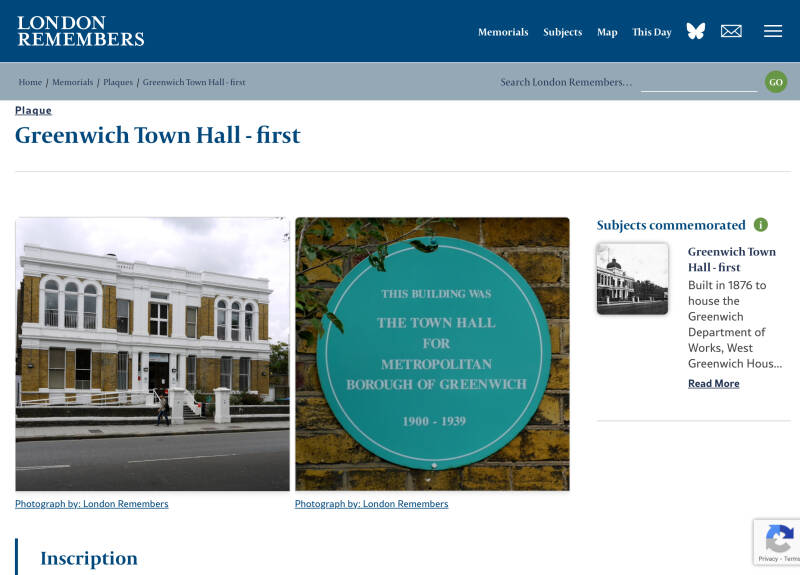
West Greenwich House was the Greenwich District Board of Works Offices from 1876 to 1900. The Memorial Stone was laid by Thomas Norfolk Esq. the Chairman of the District Board of Works on the 11th April 1876 and the building was opened by the same dignitary (also a noted Deptford brewer) on the 18th April 1877. A Dinner was held in the Ship Tavern that evening to celebrate. The first meeting of the District Board of Works was held on 25th April 1877.
The Metropolitan Borough Council came into existence in 1900and Ralph Gooding was the first Mayor.
The Metropolitan Borough Council met here for the last time on the 19th July 1939.
As built the building was surmounted by a dome that rose from a square base above the central bay of the front elevation and was surmounted by a small lantern. Below this at ground level was a shallow portico with curved ends giving an imposing and prominent front entrance.
Former THE NORTH POLE P.H., now shisha restaurant

Norman Road
GREENWICH PUMPING STATION

Greenwich Pumping Station, known until c. 1986 as Deptford Pumping Station,[1] is a sewagepumping station in the London Borough of Greenwich built in 1865 to the east of Deptford Creek. It is part of the London sewerage systemdevised by Sir Joseph Bazalgette in the mid 19th century. Today operated by Thames Water.
Deptford pumping station was constructed to raise sewage from the southern interceptor sewers by 18 ft (5.5 m) into the Southern Outfall Sewer, where it would flow onwards to Crossness Sewage Treatment Works. In the Deptford was the south London equivalent of Abbey Mills pumping station, which performed a similar function for the Northern Outfall Sewer.
in the early 2020s, the Greenwich pumping station site was the location of a shaft used to drive the Greenwich connection tunnel to Chambers Wharf on the Thames Tideway Scheme, currently under construction,[11][12] and intended to partly supersede Bazalgette's system.

The original Deptford pumping station building, now a Grade II listed building, was built in London stock brick in an Italianate style,[3][4] and comprised two engine houses with a linking boiler house.[5] It initially housed four steam-powered beam engines (later replaced by diesel and electric pumps).[6] When installed, the engines at Deptford were the largest ever built.[7][8] Two adjacent coal sheds are also Grade II listed.
HA’ PENNY HATCH. Foot/cycle bridge over DEPTFORD CREEK, RIVER RAVENSBOURNE
There was famously a wooden bridge at this crossing point which charged a toll. It was closed in 1920’s after falling into disrepair.
It’s modern replacement in 2002 is a steel lifting mechanism which continues to allow access for boats that occasionally make their way up and down the creek. A long local campaign and collaboration from all sectors of the local community succeeded in getting it designed and built. One of it’s key protagonists Pete Pope died in 2012 and his ashes were scattered here in noisy celebration.
Creekside
COCKPIT ARTS
LABAN CENTRE for CONTEMPORARY DANCE. Theatre and Faculty

RIVERSIDE
Statue of Peter the Great

Route 2. Along CADE ROAD and CROOMS HILL (road)

Cade Road
Jack Cade's Rebellion or Cade's Rebellion was a popular revolt in 1450 against the government of England, which took place in the south-east of the country between the months of April and July. It stemmed from local grievances regarding the corruption, maladministrationand abuse of power of the king's closest advisors and local officials, as well as recent military losses in France during the Hundred Years' War. Leading an army of men from south-eastern England, the rebellion's leader Jack Cade marched on London in order to force the government to reform the administrationand remove from power the "traitors" deemed responsible for bad governance. Apart from the Cornish rebellion of 1497, it was the largest popular uprising to take place in England during the 15th century.[1]
By early June more than 5,000 men had assembled at Blackheath, 6 miles (9.7 km) south-east of the City of London.
Hyde Vale
CONDUIT HOUSE
On the east wall is an inscribed stone tablet, which reads: ‘THIS CONDUIT HEAD, part of the water supply to the ROYAL HOSPITAL (for seamen) at GREENWICH was built about 1710’.
Nearby, almost inside Greenwich Park
Chesterfield Walk
THE RANGER’S HOUSE
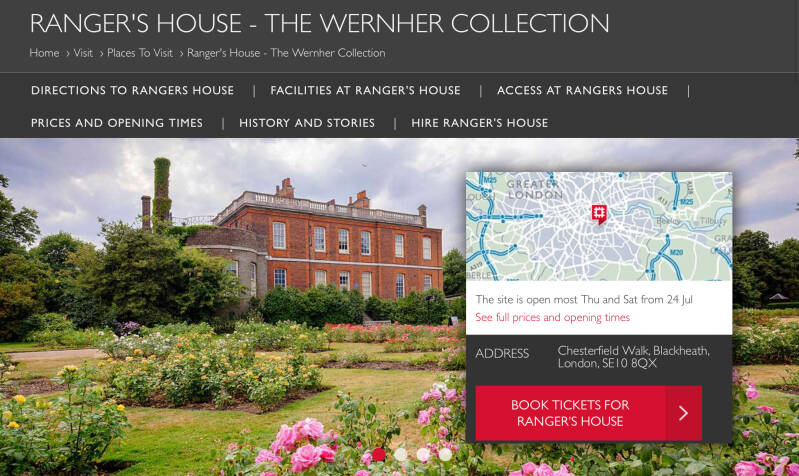
Built in the 1720s for a naval captain, Ranger’s House was later home to politicians, military officers and royals, including the Rangers of Greenwich Park, for 180 years.
Originally, b. for CAPTAIN (later ADMIRAL) FRANCIS HOSIES, a small brick villa, stone balustrade lining the roof, steps leading to an elegant stone tripartite frontispiece decorated with a mask. Ionic columns. Venetian window. 7 bays
During PHILIP, 4th EARL OF CHESTERFIELD’s ownership, rounded wings in pale yellow brick were added. “It resulted a long South gallery, with compartimentad ceiling and 3 fine bow windows: “The finest prospects in the world”.
The DUCHESS OF BRUNSWICK, mother of Queen Consort Caroline lived here early 1800?. Caroline lived next door, innMONTAGUE HOUSE?. She held the RANGER position while living there?.
FIELD MARSHALL WOLSELEY lived here as well (CRIMEAN WAR, INDUAN MUTINY; WHITEHALL statue, GILBERT & SULLIVAN inspiration for PIRATES /PENZANCE, opposed WATKIN’s CHANNEL TUNNEL project, ST.PAUL’S).
PHILIP STANHOPE ++
THE WERNHER COLLECTION
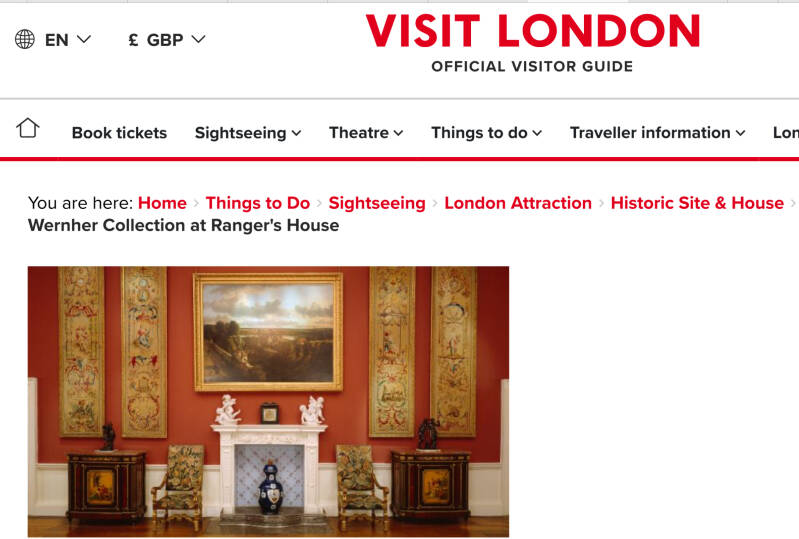
The collection was gathered by the fabulously wealthy Sir Julius Wernher, who could buy the very best and had a passion for what he called the ‘splendidly ugly’ – tiny, unusual artworks expertly crafted in rich materials.
You’ll see nearly 700 varied works of art, including Dutch Old Masters, fine Renaissance bronzes and silver treasures, medieval and Renaissance jewellery and tapestries with scenes of Chinese life.
Wernher was born in Darmstadt, Germany, in 1850. As a young man, he sought his fortune in London, initially working there as a clerk in 1871. Just six weeks into the job he was invited by the Parisian diamond dealer Jules Porgès to accompany him to Kimberley in South Africa to work at the newly discovered diamond mines.
Over the next decade, Wernher overhauled the diamond industry in Kimberley and became incredibly wealthy. He returned to London in 1881, and married his fiancée, Alice Mankiewicz, in 1888. By 1890 he was heading a conglomerate that dominated the international diamond and gold trade.
Wernher’s wealth enabled him to buy many outstanding artworks to fill the rooms of his London home, Bath House on Piccadilly, and his country estate, Luton Hoo in Bedfordshire.
Site of MONTAGUE HOUSE

Named after the first Duke of Montagu, it was the amalgamation of two late-seventeenth century houses with the addition of Park Corner House. The residence of Caroline of Brunswick, queen consort to King George IV from 1801 to 1813. Demolished in 1815, all that remains is a bath reputedly used by the queen.
QUEEN CAROLINE (consort of GIV) lived here
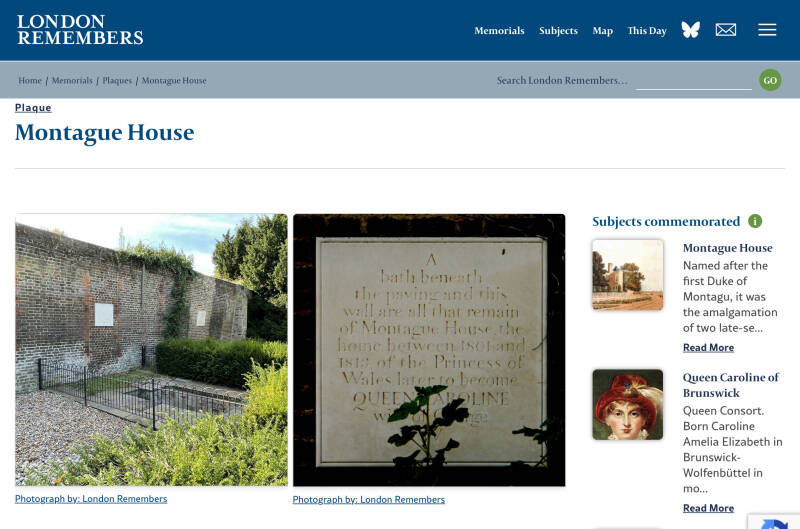
IGNATIUS SANCHO, Anti-slave campaigner lived here

Writer, shopkeeper and socialite. Born on a slave ship bound for the West Indies (his birth year is approximate). His first name was Charles, but he was baptised Ignatius. His mother died soon after arriving in New Granada and his father died by suicide rather than become a slave. He was brought to England by his owner and given to three sisters who gave him the name of Sancho. Befriended by John, 2nd Duke of Montagu who encouraged his education he became butler to his wife. At her death he was left an annuity and opened a shop in Westminster. He became the friend of many famous people of the time, including David Garrick and Gainsborough who painted his portrait. He was the first known Afro-Briton to have voted in a British election. His edited letters were published after his death.
MACARTNEY HOUSE. GENERAL WOLFE lived here
Large, rambling, mellow brick and stone. Roof balustrade, rounded windows. overlooking own garden and the RANGER’S HOUSE one.
It was b. for ANDREW SNAPE, SARJEANT FARRIER to King Charles Ii. In 1674 he filched the land from the royal domain!. And ,ccording to EVELYN, “a man full of projects”.
it became home to GENERAL WOLFE’s parents, and from here he left for QUEBEC.
1802. Extended by JOHN SOANE.
Now, private flats.
La bataille des Plaines d'Abraham se termine par la défaite des forces françaises et par la mort des généraux Wolfe et Montcalm. Jean-Baptiste-Nicolas-Roch de Ramezay, lieutenant du roi, signe la reddition de la ville, qui est livrée aux Britanniques le 18 septembre 1759, mettant ainsi un terme au siège de Québec. L'année suivante, Montréal capitule et la Nouvelle-France est officiellement cédée à la Grande-Bretagne en 1763.
Crooms Hill (road)
The Pevsner Guide describes Crooms Hill as "the pride of domestic architecture in Greenwich".[4] Much of the housing dates from the seventeenth century to the early nineteenth century.[5] Although some Tudor era buildings survive[6] much of the land was developed when Greenwich Park was enclosed in 1619 leaving the road outside the walls. Many of the new residences were built by wealthy merchants and others from the City of London as second homes
THE MANOR HOUSE
B 1697. For COMMODORE SIR ROBERT ROBINSON , Lieutenants Governor of the Royal Hospital.
One of the finest of this period in Ldn. Hooded porch. Finely carved shell motif in blue background. Very high pitched roof, gable ended, double span tiled roof.
HEATHGATE HOUSE
Relatively low, brick mansion with large gabled dormers and pilasters on brackets supporting the upper floor.
A rare example of an a 1630s domestic building (early!j with ans unaltered exterior.
PARK HALL
1724.Built by JOHN JAMES, who intended to live here but never did.
Was it the home of SIR JAMES THORNHILL?
1803 additions.
1920. Converted into apartments. A 3 bedroom apartment now: £1’8m!
ST.URSULA CONVENT SCHOOL

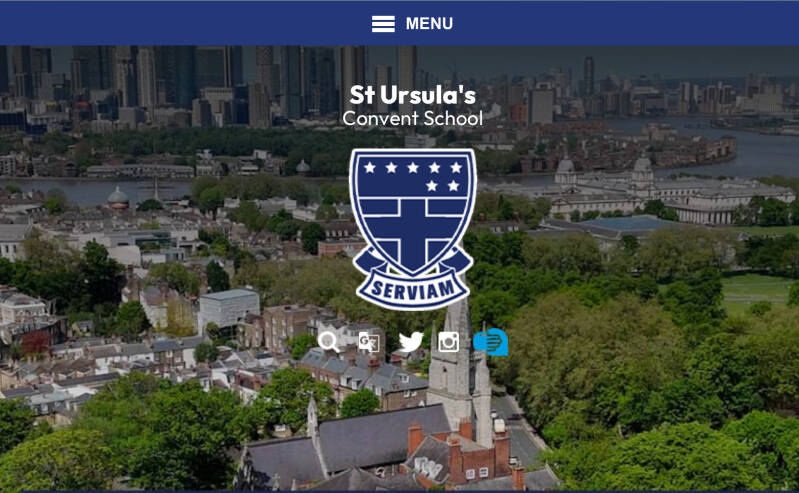
The Ursuline convent at Greenwich was founded from Duderstadt in Germany on 1 October 1877. The sisters had lived in Duderstadt since 1700 but they were expelled from their convent by the German Chancellor Bismarck who wanted the state to control all educational establishments.
After some searching the sisters found a suitable property, 70 Crooms Hill, Greenwich, formerly a boys’ orphanage but subsequently empty. They took the house on a 50 year lease at £80 a year and 21 sisters came over from Duderstadt, opening their first school with 25 pupils.
Neo-Tudor Gothic and Neo-Georgian buildings
Church of OUR LADYE STAR OF THE SEA

A Roman Catholic mission was established in Greenwich in 1793 to serve around 500 Catholic pensioners in the Royal Naval Hospital. A chapel was originally built in Park Vista but proved inadequate, and fundraising began for a new church, led by a priest, Richard Michael North. His mother had reputedly vowed to build a church dedicated to Our Lady after her two sons were rescued following a Thames boating accident, and donated the site on Croom's Hill. The church was constructed between 1846 and 1851, at a cost of over £8,000.
Designed by William Wardell in a Decorated Gothic style, with a landmark fine East tower surmounted by a tall spire, plus a pinnacle spire of Adam stair turret.
Presbitery.
Chancel and Chapel of St.Joseph and Lady Chapel
Fittings and decorative elements designed by Augustus Pugin and his son E. W. Pugin (stained glass window, tomb chest of Canon Richard North). It was opened in 1851.
For Wardell, it was his first major work, and later he would become a recognised architect in Australia.
Anti-RC protests took place here when it was constructed, and an effigy of the Pope was burned on the Heath
No.52 THE GRANGE
B. 17th c with 18th c. additions. The Chief Joiner of QEI lived here (timber work?).
Site belonging to GHENT ABBEY since 818 (a concession of ALFRED THE GREAT’s granddaughter). Thence, “grange” or abbey farm
A GAZEBO overlooks the road and the park. 1672, small, square, with a pyramidal roof and a carved plaster ceiling.
When built, by WILL HOOKER (Sheriff and LM) , a high brick wall surrounded the park. 1665
The LANIER FAMILY of Elizabethan musicians lived here
A bedroom apartment here, now?: £1’8 m
Inside the ROYAL PARK, RESERVOIR & CONDUIT HOUSE (by NICHOLAS HAWKSMOOR”
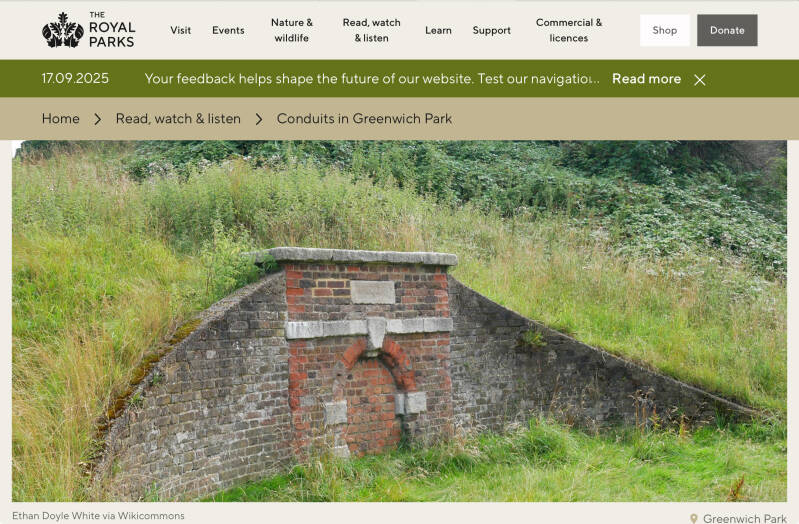
HAWKSMOOR discovered that Greenwich Park was home to a series of ‘conduits’ – an underground water system that relied on gravity to carry water downhill. Elements of this system may have served the Tudor Greenwich Palace, built on the banks of the River Thames in the 1400s.
Hawksmoor decided to expand and improve this old system, rebuilding and relining brick structures through which to channel water. He arranged for a series of ‘conduit houses’ to be built around the park to provide access to the water system – and large brick reservoirs to collect the water before it was carried in lead pipes down the hill.
CONDUITS & WATER SUPPLY IN GREENWICH PARK https://www.royalparks.org.uk/read-watch-listen/conduits-greenwich-park — https://www.layersoflondon.org/map/records/greenwich-park-conduits
Inside the Park, ANGLO-SAXON BARROWS
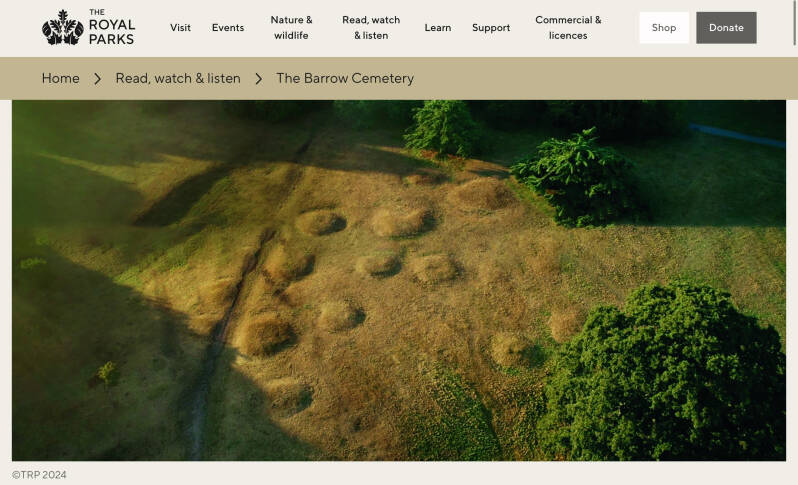
“Greenwich Park has an exciting secret. Did you know that the park is home to one of England’s best-preserved Anglo-Saxon barrow cemeteries? The cemetery can still be seen today.
The area around Croom’s Hill, north of The Avenue and west of the Meridian line, used to be a large burial ground, dating back to between AD 480 and AD 700. If you look closely – particularly during hot summers when the grass is parched – you may be able to spot a series of circular mounds. Each mound is known as a ‘barrow’, and it marks the location of at least one grave.”
No.26 BENJAMIN WAUGH lived here. F. of NSPCC, in 1884

Social reformer and minister. Born in Settle, Yorkshire. Whilst working in the slums of Greenwich, he became appalled at the deprivations and cruelties suffered by children. He wrote 'The Gaol Cradle, Who Rocks It?', urging the creation of juvenile courts and children's prisons as a means of diverting children from a life of crime. In 1884, he was a co-founder of the London Society for the Prevention of Cruelty to Children, which became the NSPCCin 1889 with Waugh as its first director, until 1905. Died at 4 Runwell Terrace, Westcliffe-on-Sea, Essex.
We can't find confirmation that this Rev. Waugh is the 'Revd. B. Waugh' who was one of the managers of the 1873-75 changes at Aske’s Hospital, but it seems very likely.
Gloucester Circus


No.10 THE FAN MUSEUM

This was an initiative of HELENE ALEXANDER, 1989. Her private collection of 2.000:fans, from the 17th Chas been enlarged by successive donations..
How fans are made, materials, types, sources
Fans displayed according themes (children, feathered, flowered
Demonstrations of fan making, construction, conservation and restoration… take place in the craftworkshop.
The museum occupies 2 Georgian houses of 1721, scrupulously restored.
The garden is laid out with a fan-shaped terrace, a pool, Japanese style planting and a reproduction of a Georgian orangery.
Helene used to conduct the tours and teas used to be served
East. 1702 Terrace of houses, built by the JOHN ROAN CHARITY
D.1644. Yeoman of His Majesty’s Harriers, he built the houses to generate income to educate the poor boys of East Greenwich, until the age of 15. The owners, although freeholders, still pay an annual it’s to the JOHN ROAN SECONDARY SCHOOL (MAZE HILL)
No. 6. CECIL DAY-LEWIS lived here
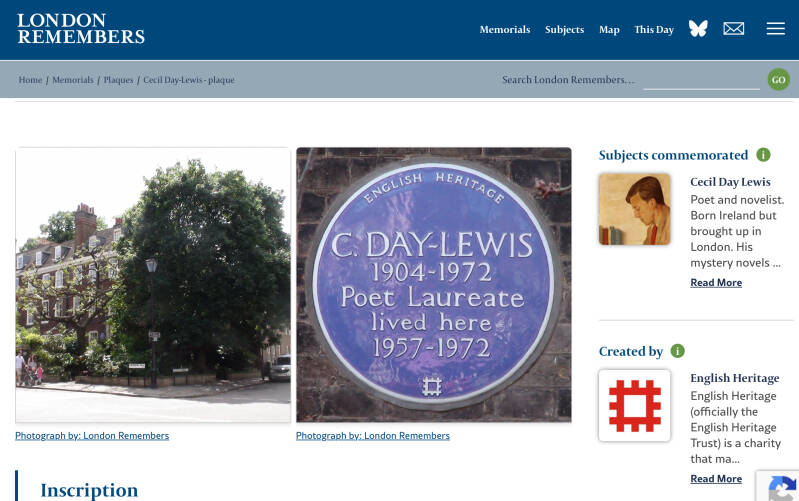
A poet associated in the 1930s, with AUDEN and SPENDER, with the causes of the Left. He was a member, until 1939, of the CPGB.
After the War, more of a voice of the poetry establishment. Appointed Poet Laureate in 1957.
Under the pseudo NICHOLAS BLAKE, he published detective stories.
ACTOR DANIEL is his son.
East side, nos 3-11 17th c row of tenements
modest. Weatherboarded at the rear.
Nos.7-9
No.5
GREENWICH THEATRE

B. 1968 in the shell of a music hall, associated or attached to the next door pub. Greenwich, in the 19th c had MH of a certain ambitious scale, attracting big names, and public from far away: This one, the GOOD DUKE HUMPHREY COFFEE TAVERN, MORTON’S…
It survived under successive names (GR.PAL. OF VARIETIES, PARTHENON, GRE.HIPPODROME, and finally the ROSE & CROWN).
MARIE LLOYD, DAN LENO, VESTA TILLEY … Some stars lodged at the SREAD EAGLE.
From the 20s to 1949 a PICTURE PALACE. Then, a municipal warehouse threatened with demolition.
1962. Actor EWAN COOPER, with a vision of a classless community theatre rescued the institution when the chances of a repertory company on the edge of London were fragile. The Borough C, the GLC and the Arts Council helped start fund raising performance, like olde tyme music hall. It became an outstanding FRINGE playhouse.
Local architect BRIAN MEEKING designed the new building. ROISIN PHILLIPS formed a new company in 1973.
Stadium-type auditorium.
G.JACKSON, TOM COURTENEY, MIA FARROW.
Recently renovated.
YE OLDE ROSE AND CROWN P.H.
An old coaching inn
Former SPREAD EAGLE coaching inn
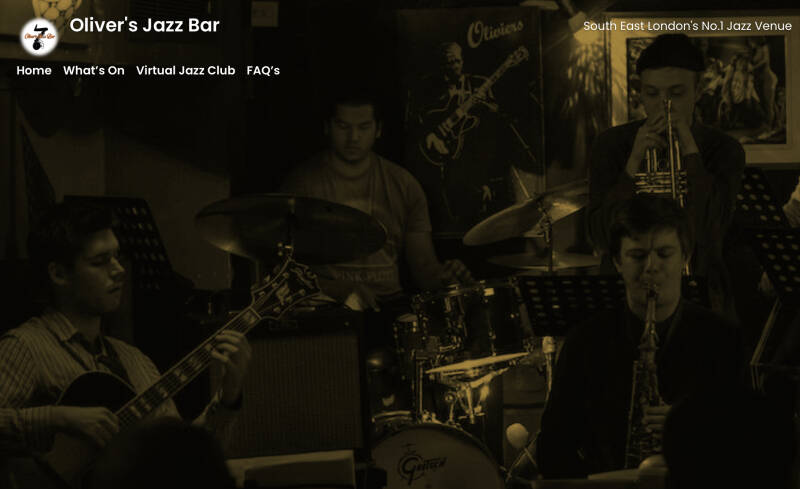
Originally 1650s, 1730s. The principal coaching inn inn Greenwich, with services to London and the Kent coastal towns. The then SILVER ST, now NEVADA, was the main road, Former coach office booking hall and archway to the c.1780 stable yard.
Royal Park
St.MARY’s MARY’s COTTAGE & herb garden
Statue of King WILLIAM IV
William IV reigned from 1830 to 1837 and was succeeded by his niece the Queen Victoria. The Corporation of the City of Londonvoted the funds to erect a monument in his memory. It was originally located in the recently constructed King William Street in the City of London, raised on a high plinth on the former site of the Boar's Head Inn.[3] The former king is shown wearing the uniform of an admiral, in acknowledgement of his previous service in the Royal Navy. It was one of the first statues to be created using granite.
By the mid-1930s the increasing motor traffic meant that William's statue was adding to delays and the City was looking to redevelop the site. It was agreed that the statue should be shifted to Greenwich and be placed by the site of the recently demolished St Mary's Church.
ROYAL MARITIME MUSEUM
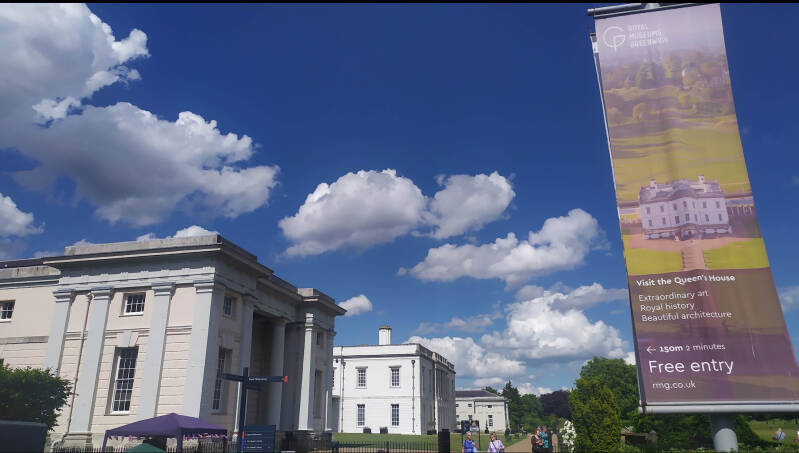
HMS VICTORY (in a bottle): ex-Trafalgar Square’s Fourth Plinth

This work is a depiction of Nelson's ship, HMS Victory, with sails made of printed fabric in a colourful West African pattern inside a large glass bottle stopped with a cork; the bottle is 4.7 metres long and 2.8 metres in diameter (15.4 ft × 9.2 ft).[11]According to the Greater London Authority, the artwork is the first "to reflect specifically on the historical symbolism of Trafalgar Square, which commemorates the Battle of Trafalgar, and will link directly with Nelson's column. It is also the first commission by a black British artist."[12] The work proved popular, and its removal in early 2012 led to fears that it would be sold to a Korean collector.[13][14]The Art Fund launched a public appeal to raise money to buy the work from the artist.[13] By April 2012 the money was raised, including £264,300 donated from the public and £50,000 each from The Art Fund and Shonibare's gallery Stephen Friedman.[11]The work was the first of the commissions to be relocated and is now part of the permanent collection of the National Maritime Museum
THE QUEEN’S HOUSE



I hope you are enjoying this guide!

